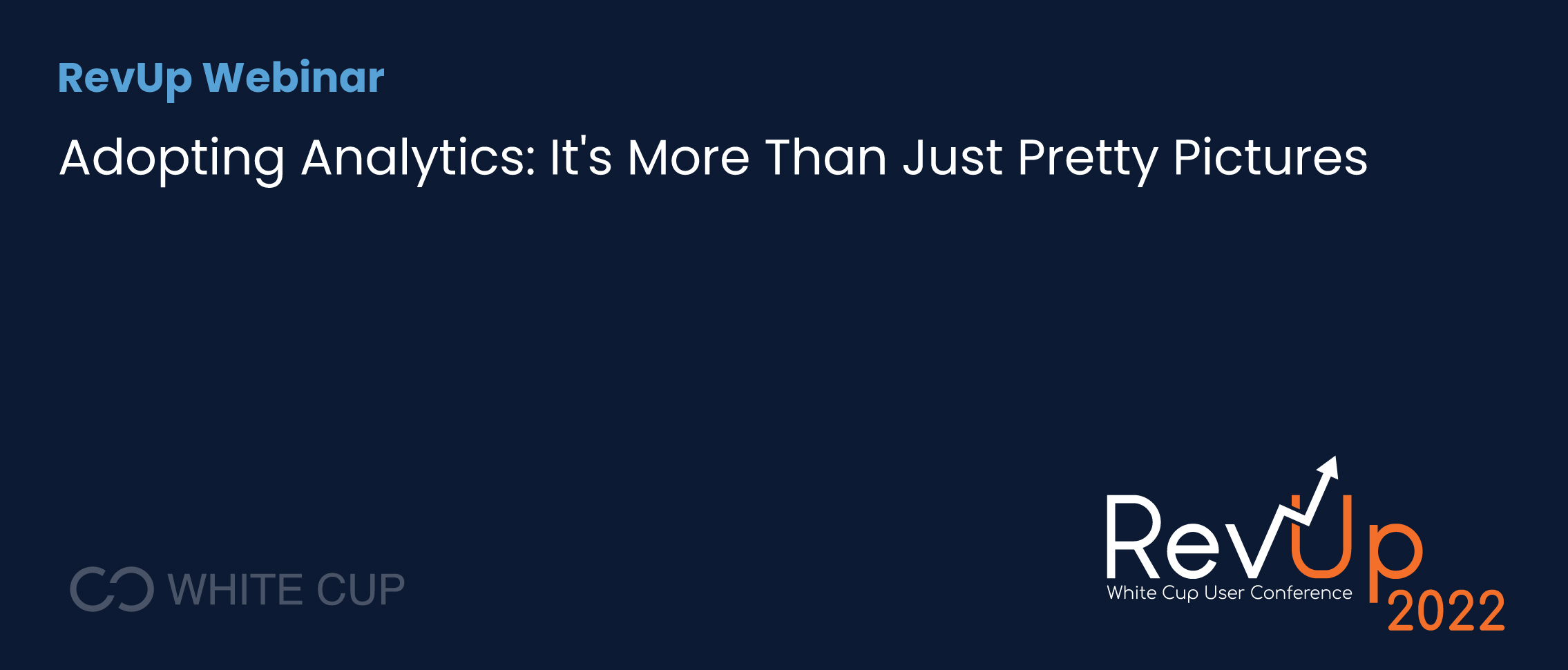
Adopting Business Intelligence Analytics
It’s More Than Just Pretty Pictures
Business Intelligence analytics is more popular than ever. According to Globe Newswire, the global business intelligence market size is expected to reach USD 43.03 billion by 2028, exhibiting a CAGR of 8.7% during the forecast period.
The challenge we’re faced with is that adoption has not kept up with the investment into these systems. Adoption hovers around 25%-30% from business to business. The reason is that most dashboards are designed either to be explanatory or exploratory.
An explanatory dashboard explains what is happening. It describes.
An exploratory dashboard figures out what is happening. It diagnoses.
And who’s generally responsible for diagnosing what happened, why it happened, and making adjustments to optimize the business? Well, it’s analysts, managers, and executives. So, maybe the reason we only see 25%-30% adoption in analytics is that we’re mostly targeting 25%-30% of each business.
Obviously, the solution is to just replace everybody in the company with managers and analysts. Adoption problem solved.
Well, not exactly. We can’t just have people looking at reports and looking for solutions because nothing else would get done. It will not work for any of the action-driven roles within your business.
Business Intelligence Adoption Hurdles
To drive greater adoption, we need to understand why exactly more people are not using analytics already. Generally, four problems are big blockers.
- Data infrastructure doesn’t scale, so users can’t get the data they need
- Complex tools are difficult to use, leaving users frustrated
- Multiple sources of data make it impossible to know the truth
- Low data-literacy means employees don’t know how to interpret the data
So, if we know these are the barriers to entry, to reach the most users, we need simple, scalable tools based on the right data that (most importantly) help users understand what to do. And it all needs to be housed in one singular tool.
Let’s focus on that last bit on “what to do.” For many, your to-do list is a series of lines and checkmarks.
These to-do lists are great. They are an effective way of displaying a lot of information in a small space that’s also easy to understand. If you’re an action-driven person with action items to accomplish, you need an actual list of things to do. In that case, dashboards can’t be the explanatory or exploratory type we’re all used to. Instead, adaptable business intelligence analytics and dashboards need to be designed for action.
White Cup BI Dashboards Designed for Action

They need to aggregate all your data and show specific things, in lists, with clear information about what the data means. This is a way how we can bridge the gap in data literacy. To be clear, this doesn’t mean that we’re unhooking people from the process of making decisions. We are giving them data so they can use their brain to understand the product, understand the context around this information, and ultimately make an educated decision augmented by intuition and supported by the data. So, it’s a to-do list, but it’s a to-do list presented with the context behind which the to-do list was made.
As we build this third type of dashboard toward action, we need to start asking what actions you want your users to take based on the data.
Start from the actions. White Cup BI includes and can build even more action-oriented dashboards. With that functionality in mind, ask what the job is you need to be done and how that job would be done better with data. Then, go get that data and pull that data into a report. The key here is not to start with a set of data organized into a chart AND THEN ask what actions you want your users to take.
Companies that have done this well are not always the companies that present a pretty dashboard. But they’re really useful. A dashboard that isn’t pretty but is really useful is way more important to the business because now a user is doing something better than they would have done yesterday because of the new information at their fingertips.
Building Analytics Dashboards
The idea of building a dashboard based on a specific job or role is something you’ll see built into White Cup BI. Using those as a starting point, your business’s goals should influence your dashboard customizations. Whether it’s a goal to respond to change in lead times, a goal to increase margins when a product is in tight supply, or something else, those things can be built into reports and dashboards that will help people on the front lines understand what they should do based on the data.
Ultimately, showing the value that can be gained by utilizing business intelligence analytics dashboards is exactly how you’ll drive the adoption of analytics widely across your business. If you can demonstrate the time savings, the sales increases, the ease of use, and the clear direction for growth, adoption is more of a matter of time than a matter of persuasion.
With most companies seeing BI adoption hovering around 25% for almost a decade, it’s no wonder that 73% of business executives say their analytics projects produced no actionable insights. Rolling out BI requires simple, scalable tools based on correct data that ultimately help users understand what to do. Learn from prior MITS CEO Gary Owen about how you can help your company move beyond just having dashboards to really using data to make measurable improvements in your business.



